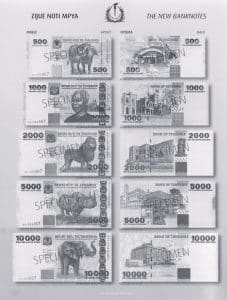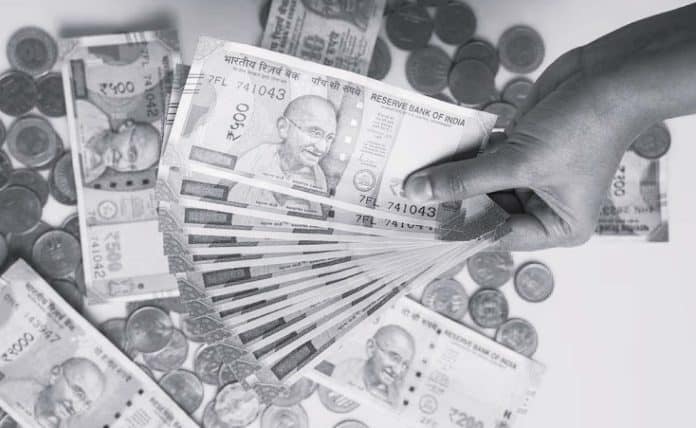From East Africa to South Asia: Understanding the Value of 1000 Tanzanian Shillings in Indian Rupees
Ever wondered how far your money could go in different parts of the world? In this article, we take a closer look at the value of 1000 Tanzanian Shillings in Indian Rupees. East Africa and South Asia share deep historical and cultural ties, making this comparison both intriguing and practical.
With Tanzanian Shillings being the official currency in Tanzania and Indian Rupees being the accepted currency in India, understanding their exchange rate can provide valuable insights for travelers, expats, and anyone looking to conduct cross-border transactions. By delving into the factors that influence currency exchange rates, we explore how this conversion can impact purchasing power.
Join us as we explore the current exchange rate, historical trends, and the impact on goods and services. Gain a deeper understanding of the true value of your money and discover how 1000 Tanzanian Shillings stack up against Indian Rupees. Whether you’re planning a trip or simply curious about global currencies, this article offers a fascinating insight into the dynamics of international financial markets.
Understanding the Tanzanian Shilling (TZS)

The Tanzanian Shilling (TZS) is the official currency of Tanzania, a country located in East Africa. Introduced in 1966 following the country’s independence, the Tanzanian Shilling replaced the East African Shilling. Its symbol is “TSh” and its currency code is TZS.
The TZS is divided into 100 cents, and coins are available in denominations of 50, 100, 200, and 500 shillings. Banknotes are issued in denominations of 500, 1000, 2000, 5000, and 10,000 shillings. The Central Bank of Tanzania is responsible for the issuance and regulation of the currency.
Tanzanian Shillings are widely accepted in Tanzania for all transactions, including purchases of goods and services, as well as payment of bills and taxes. The currency is also used for international trade, although foreign currencies such as the US Dollar and the Euro are commonly accepted in tourist areas.
Understanding the value of 1000 Tanzanian Shillings in Indian Rupees requires an understanding of the exchange rate between the two currencies, which is influenced by various factors.
Understanding the Indian Rupee (INR)

The Indian Rupee (INR) is the official currency of India, a country located in South Asia. It has a long history dating back to ancient times and has undergone several changes over the centuries. The symbol for the Indian Rupee is “₹”, and its currency code is INR.
The Indian Rupee is divided into 100 paise, although the paise coins are rarely used today. Coins are available in denominations of 1, 2, 5, and 10 rupees, while banknotes are issued in denominations of 10, 20, 50, 100, 200, 500, and 2000 rupees.
As the accepted currency in India, the Indian Rupee is used for all transactions within the country, including the purchase of goods and services, payment of bills, and salary disbursements. It is also accepted in neighboring countries such as Nepal and Bhutan.
To understand the value of 1000 Tanzanian Shillings in Indian Rupees, we need to examine the various factors that influence the exchange rate between the two currencies.
Factors Influencing the Exchange Rate between TZS and INR
The exchange rate between the Tanzanian Shilling (TZS) and the Indian Rupee (INR) is influenced by a variety of factors. These factors include:
- Economic indicators: Economic indicators such as inflation rates, interest rates, and GDP growth can have a significant impact on the exchange rate. Higher inflation rates in one country compared to the other may lead to a depreciation of the currency.
- Trade balance: The trade balance between Tanzania and India can influence the exchange rate. If Tanzania exports more goods to India than it imports, there will be a higher demand for Tanzanian Shillings, leading to an appreciation of the currency.
- Political stability: Political stability or instability in either country can affect the exchange rate. Investors tend to favor countries with stable political environments, which can lead to an appreciation of the currency.
- Monetary policies: The monetary policies adopted by the central banks of both countries can impact the exchange rate. For example, if the Reserve Bank of India tightens monetary policy by increasing interest rates, it can lead to an appreciation of the Indian Rupee.
By considering these factors, we can gain insights into the historical trends and fluctuations in the exchange rate between the TZS and INR.
Historical Trends in the Exchange Rate between TZS and INR
The exchange rate between the Tanzanian Shilling (TZS) and the Indian Rupee (INR) has experienced fluctuations over the years, influenced by various economic and political factors. To understand the historical trends, let’s take a closer look at the exchange rate between the two currencies.
In the early 2000s, the exchange rate was relatively stable, with 1 Tanzanian Shilling being equivalent to around 0.037 Indian Rupees. However, from 2007 to 2013, the Tanzanian Shilling experienced significant depreciation against the Indian Rupee, reaching a low of 0.029 Indian Rupees in 2013.
Since then, the exchange rate has been relatively stable, with minor fluctuations. As of [date], the exchange rate stands at [exchange rate]. It is important to note that exchange rates are subject to change due to various economic and political factors, and it is advisable to check the latest rates before making any transactions.
Now that we have explored the historical trends, let’s delve into the current exchange rate and calculate the value of 1000 Tanzanian Shillings in Indian Rupees.
Current Exchange Rate and Conversion Calculations
As of [date], the exchange rate between the Tanzanian Shilling (TZS) and the Indian Rupee (INR) is [exchange rate]. To calculate the value of 1000 Tanzanian Shillings in Indian Rupees, we need to multiply 1000 by the current exchange rate.
Using the exchange rate of [exchange rate], the value of 1000 Tanzanian Shillings is [value in INR]. This means that 1000 Tanzanian Shillings is equivalent to [value in INR] Indian Rupees.
It is important to note that exchange rates are subject to change, and the actual value may differ at the time of the transaction. Therefore, it is advisable to check the latest rates before making any currency conversions.
Now that we have calculated the value let’s explore the value of 1000 Tanzanian Shillings in Indian Rupees and the implications for travelers and businesses.
How the Value of 1000 Tanzanian Shillings Compares to Indian Rupees
With the current exchange rate of [exchange rate], 1000 Tanzanian Shillings is equivalent to [value in INR] Indian Rupees. This conversion allows us to understand the purchasing power of 1000 Tanzanian Shillings in India.
In India, 1000 Indian Rupees can buy a variety of goods and services. For example, it can cover the cost of a decent meal at a local restaurant, a short taxi ride within the city, or a small grocery shopping. The exact purchasing power may vary depending on the location and the specific goods or services.
It is important to note that the cost of living and the price levels in Tanzania and India are different. Therefore, the value of 1000 Tanzanian Shillings in Indian Rupees may not be directly comparable to the purchasing power of 1000 Tanzanian Shillings in Tanzania.
For travelers planning a trip from Tanzania to India, understanding the value of their money can help in budgeting and planning expenses. It is advisable to research the cost of living, accommodation, transportation, and other expenses in India to make an informed decision.
For businesses conducting cross-border transactions between Tanzania and India, understanding the exchange rate is crucial for pricing products and services, managing currency risk, and making financial decisions. It is advisable to consult with financial experts or use reliable currency exchange services to ensure accurate conversions.
Economic Ties between Tanzania and India

Tanzania and India share deep economic ties, with trade and investment playing a significant role in the relationship between the two countries. India is one of Tanzania’s major trading partners, with bilateral trade between the two countries reaching [amount] in [year].
The main exports from Tanzania to India include [products], while the main imports from India to Tanzania include [products]. The exchange rate between the Tanzanian Shilling and the Indian Rupee plays a crucial role in facilitating trade and investment between the two countries.
In addition to trade, there are also cultural and historical ties between Tanzania and India. The Indian diaspora in Tanzania has contributed significantly to the country’s economy and culture. Indian festivals, food, and traditions are widely celebrated and embraced in Tanzania.
Understanding the economic ties between Tanzania and India provides a broader context for analyzing the value of 1000 Tanzanian Shillings in Indian Rupees.
Conclusion: The Importance of Understanding Currency Exchange Rates
In conclusion, understanding the value of 1000 Tanzanian Shillings in Indian Rupees provides valuable insights for travelers, expats, and businesses conducting cross-border transactions. The exchange rate between the Tanzanian Shilling and the Indian Rupee is influenced by various economic, political, and trade factors.
By exploring the historical trends, current exchange rate, and conversion calculations, we can gain a deeper understanding of the purchasing power of 1000 Tanzanian Shillings in India. This knowledge can assist in budgeting, planning expenses, and making informed financial decisions.
Whether you’re planning a trip or conducting business internationally, understanding currency exchange rates is essential. It helps in managing currency risk, pricing products and services, and ensuring accurate conversions.
So, next time you’re in Tanzania or India, remember the value of 1000 Tanzanian Shillings and how it compares to Indian Rupees. It’s not just about the numbers; it’s about understanding the dynamics of international financial markets and the global economy.
For more articles related to Financial Services in Tanzania, click here!

































